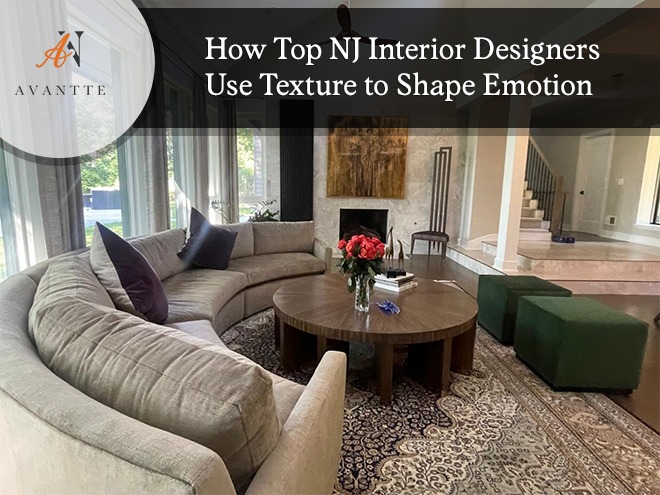How Top NJ Interior Designers Use Texture to Shape Emotion
People generally relate interior design with colors & furniture. But if you ask any experienced designer what truly gives a room its feeling, they’ll tell you it’s the ‘Texture’. The way a wall feels under your hand, the softness of a sofa & even the shine of a table surface each one plays a part in shaping how a space makes you feel.
Understanding this can completely change the way you approach your home. Whether you are designing a cozy apartment or a luxury home, texture helps connect emotion to the environment. That’s why many NJ interior designers treat it as the heart of their creative process.
Why Texture Matters
Texture decides how comfortable or lively a space feels. It’s not only about looks. Our brain reacts to surfaces. Rough ones feel cozy and grounding, while smooth ones feel clean and modern.
There’s actual research behind it. What we touch every day changes our mood. A mix of soft & firm textures keeps a place inviting and balanced. For eg., natural wood or linen brings warmth, while glass and polished metal make things look sharper & brighter.
Texture also changes how light and sound behave. A matte wall absorbs light and keeps a space calm. Glossy tiles bounce it back, making a room look bigger and fresher. Even the sound echoes differently. Soft fabrics make a space quieter, while bare walls make it louder.
Textures are also chosen to deal with the changing weather. Designers often mix warm materials like wood & wool for winter with cooler finishes like marble for summer. It is practical and emotional at the same time.
The Designer’s Toolkit
Each material has its emotional language. A luxury interior designer in NJ usually layers these carefully to make the space not only beautiful but emotionally aligned with how you want to feel in it:-
- Wood- Brings natural warmth and grounding energy. Perfect for living rooms or offices where you want comfort and stability
- Textiles- Things like velvet, cotton, or boucle add softness. Velvet feels rich and cozy, while cotton keeps a space simple and airy
- Stone- Marble or granite instantly adds elegance. Polished stone gives a cool, clean look, ideal for bathrooms or entryways
- Metals and Glass- Brushed brass or matte black finishes add edge and balance. Glass keeps the room open and light
- Textured Paints or Plaster Walls- Add depth without clutter. They also help with acoustics and light diffusion
Professional designers use a combination of tactile & visual textures to control how a space feels.
Layering Texture
Layering is what turns a flat-looking room into one that feels alive. Designers often mix anchor textures, mid-layer textures & accent textures.
For e.g., a cozy living room might have matte walls, a wool rug, a soft velvet sofa & a metal coffee table. You’ll notice the room feels balanced. That’s the emotional power of layering.
Even the smallest detail can change how welcoming a room feels.
Choosing Textures for Your Home
If you’re planning to redesign your space, here’s a simple framework to guide you:-
- Decide what emotion you want the room to express (calm, warmth, energy & luxury)
- Match the material to your lifestyle. Families often prefer easy-to-clean fabrics and sturdy surfaces
- Always test samples in both daylight and artificial light. A texture can look completely different at night
- In residential interior design in NJ, the key is to choose materials that adapt well to changing weather & humidity
Working with us at Avantte Interior Designs, the best interior designers in NJ, makes the process easy and enjoyable. We combine creative instinct with hands-on material knowledge, helping you touch, see, and truly experience how every texture will shape your space.
FAQs
- How do textures affect mood in interior design?Textures influence how we emotionally perceive space. Soft textures feel cozy and safe, while smooth ones feel modern and formal.
- What’s the best way to mix textures in one room?U
se contrast wisely. Combine rough with smooth or matte with gloss. Keep one main texture as a base and layer others around it.
- Are certain textures better for New Jersey homes?
Yes, materials that handle humidity and temperature shifts like treated wood, stone, and breathable fabrics work best for NJ’s climate.


